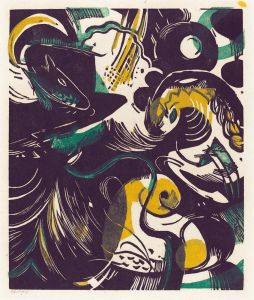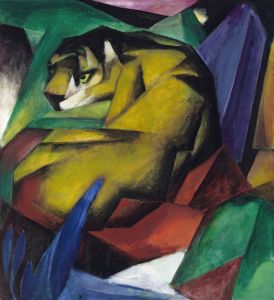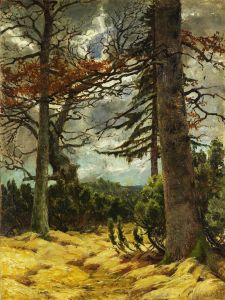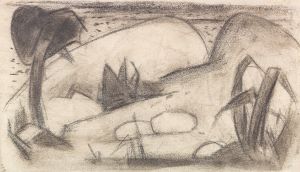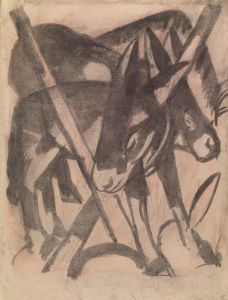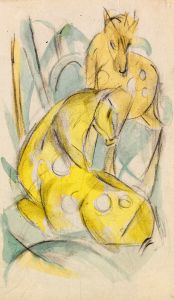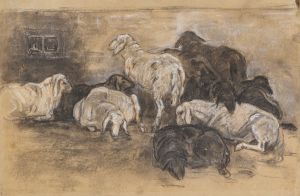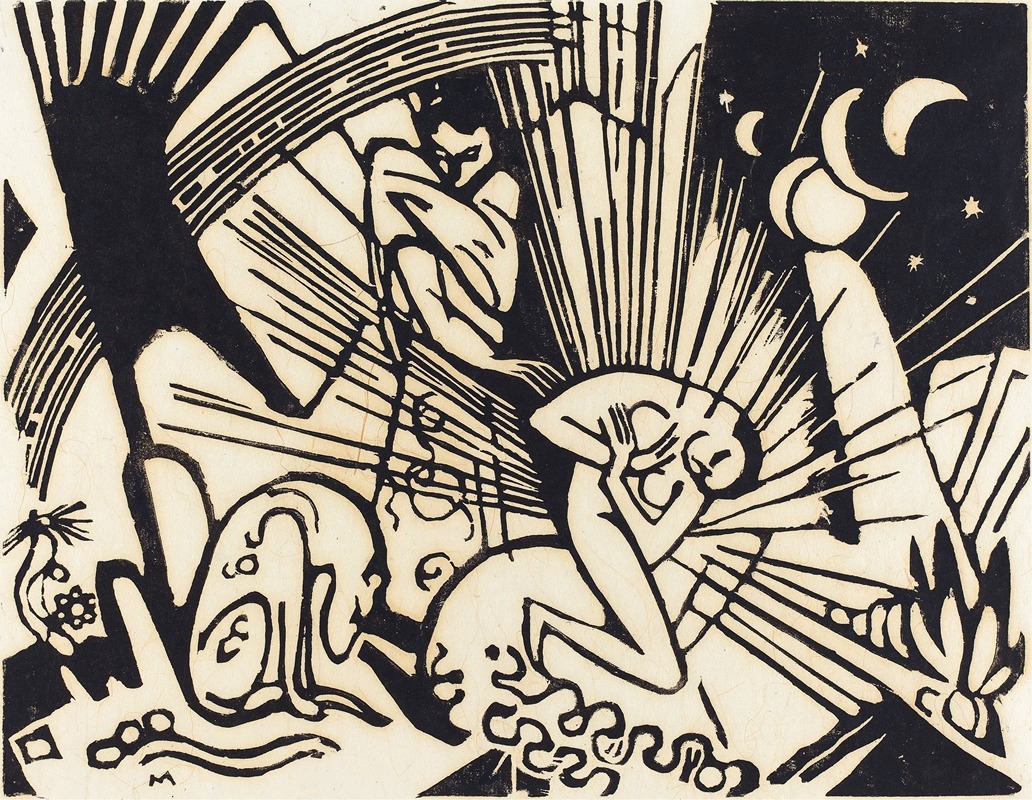
Reconciliation
A hand-painted replica of Franz Marc’s masterpiece Reconciliation, meticulously crafted by professional artists to capture the true essence of the original. Each piece is created with museum-quality canvas and rare mineral pigments, carefully painted by experienced artists with delicate brushstrokes and rich, layered colors to perfectly recreate the texture of the original artwork. Unlike machine-printed reproductions, this hand-painted version brings the painting to life, infused with the artist’s emotions and skill in every stroke. Whether for personal collection or home decoration, it instantly elevates the artistic atmosphere of any space.
"Reconciliation" is a painting by the German artist Franz Marc, who was a key figure in the Expressionist movement. Born on February 8, 1880, in Munich, Marc is best known for his depictions of animals, which he used to convey his ideas about the spiritual harmony of nature. His work is characterized by bold colors and dynamic compositions, often reflecting his interest in the symbolic and emotional use of color.
Franz Marc co-founded the art group Der Blaue Reiter (The Blue Rider) in 1911 with Wassily Kandinsky. This group was pivotal in the development of German Expressionism and sought to express spiritual truths through their art. Marc's works often feature animals in natural settings, which he believed were purer and more beautiful than humans.
"Reconciliation" was created in 1912, a period during which Marc was deeply influenced by the ideas of Theosophy and the writings of Friedrich Nietzsche. The painting reflects his belief in the unity of all living things and the possibility of harmony between humans and nature. Marc's use of color in "Reconciliation" is particularly notable; he employed a vibrant palette to evoke emotional responses and to symbolize different aspects of the natural world.
The composition of "Reconciliation" is dynamic, with interlocking forms and a sense of movement that draws the viewer's eye across the canvas. Marc's technique involved the use of bold, unblended colors and simplified shapes, which were intended to convey the essence of the subjects rather than their realistic appearances. This approach was influenced by his study of the works of Vincent van Gogh and the Fauves, as well as his interest in the spiritual and symbolic potential of art.
"Reconciliation" is part of a series of works in which Marc explored the theme of harmony between humans and animals. In this painting, the figures are intertwined in a way that suggests a deep connection and mutual understanding. The animals in Marc's paintings are often depicted with a sense of nobility and grace, reflecting his belief in their spiritual purity.
Franz Marc's career was tragically cut short by his death in World War I. He was killed in action on March 4, 1916, at the age of 36. Despite his brief career, Marc left a lasting legacy and is remembered as one of the most important artists of the early 20th century. His works continue to be celebrated for their emotional depth, innovative use of color, and profound exploration of the natural world.
"Reconciliation" remains an important example of Marc's artistic vision and his commitment to expressing the spiritual unity of life through his art. The painting is held in high regard by art historians and continues to be studied and admired for its contribution to the Expressionist movement and its enduring message of harmony and understanding.





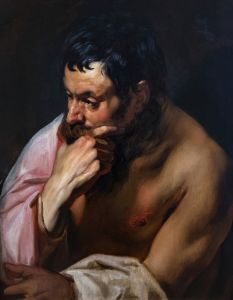
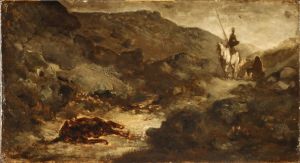
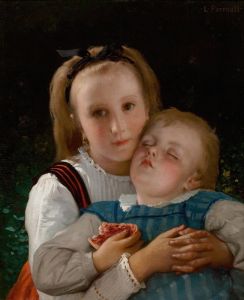
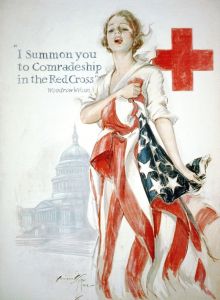
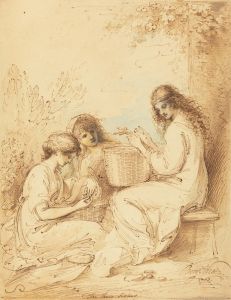
![A Woman and a Horse, Let Someone Else Master Them [The Horse-Abductor]](/imgs/264582/s/francisco-de-goya-a-woman-and-a-horse-let-someone-else-master-them-the-horseabductor-5fe8d731.jpg)
